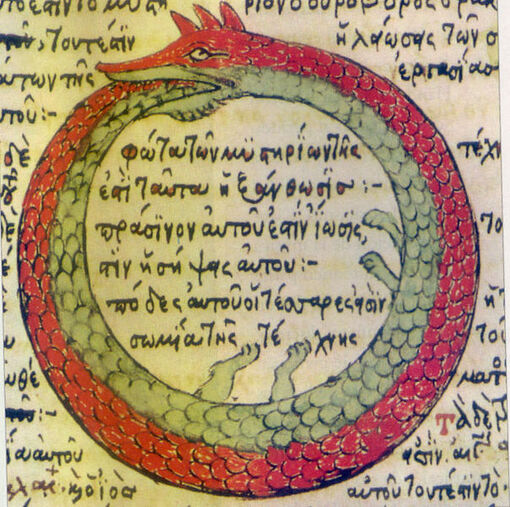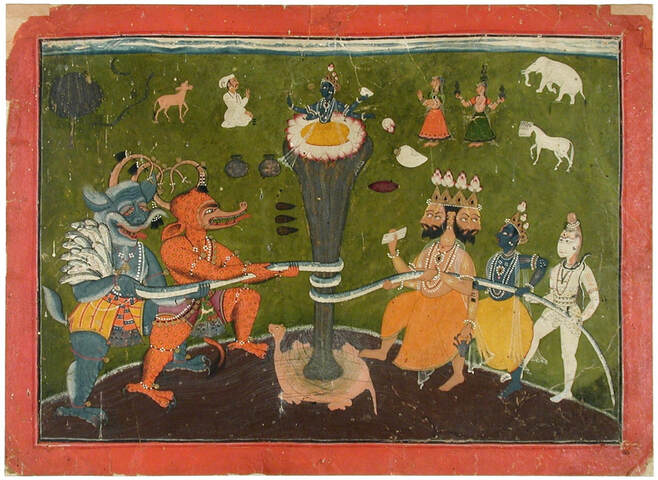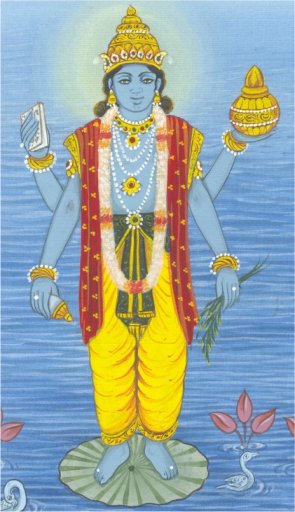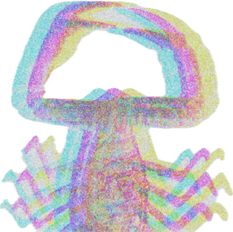Kālsarpa (Kala Sarpa Yoga) is a controversial topic in Jyotish, Vedic astrology, mainly because it is not found in any classical texts. True to form, the shadowy nature of the lunar nodes take a firmer hold when we ignore them. There is reference to this yoga in Tantrik texts that appear later in South India, a yoga or combination that is formed when all the visible planets line up on one side of the lunar nodes.
The lunar nodes themselves are full of controversies, paradoxes and uncertainties. They are shadows that darken the mind. Sometimes, these shadows offer a different perspective that bring great insights. At other times, they completely obscure reality. Sometimes conspiracy theories are onto something. Yet they often take that something and distort it.
When shadows impact all the planets, they become even more potent, and yet subtly so. The subtler something is, the more powerful. Because we are not aware of it, it has more of an impact. This formation can often show us feeling out of control, as the shadows works in the background, just like serpents.
The lunar nodes represent our hidden nature, things which confound, things we reject. And yet, we are also fascinated by them. And just like conspiracy theories, there is much controversy and polarizing opinions about them. Everything lines up on one side, showing a divisive, lopsided view.
The Kālsarpa, or ‘serpent of time’, gives a sense of time being warped, looped and extreme, creating a sense of instability. This instability creates more change, more instability. Yet it moves things along all the same.
There’s a potent form of this combination occurring in 2022, from the end of January until April. This occurred in 2020 and 2021 also, as Jupiter and Saturn are on one side of the nodal axis. At some point, they are joined by the faster moving planets.
Back and Forth
Rāhu, the north node points us forward, grasping for something we feel we lack, as we try to fill a void, represented by Ketu, the south node. Ketu points us back, to where we come from, in our lives, and in a spiritual sense; the emptiness to which we all return one day, the ‘void’ or ‘non-self’ spiritual folk speak of.
We tend to reject this in a worldly sense, just as we don’t like to think of our own death; our minds somehow tricking us into avoiding the subject. When it does come to visit, when someone close to us dies, we are left feeling shocked. We feel the void they leave behind. Yet Ketu also represents the connection we all have to one another, through this void.
Ketu also represents mistakes, as our past is full of them! This often pulls our awareness back to look at where we went wrong.
Yet we often keep doing the very thing we wish to overcome because it becomes our default mode. Because we are so focused on the future, we keep repeating the same old mistakes, missing the lessons the past is teaching us.
You can blame Rāhu for that too, as it keeps pulling us forward, pushing an agenda. Wishing for something in the future, keeps us moving away from our past.
We'll step over anyone to get what we want when the serpent has a hold of us.
By becoming aware of our shadow nature, of what American philosopher Ken Wilber calls the ''nature of transcend and include'', we can begin to integrate the shadows. We can override the need to ''transcend too soon'', which poorly integrates what we wish to get over. This tendency creates the shadows, as we overshoot the mark and fail to integrate the experience. By doing so, we set up one type of shadow. Wilber explains that if something goes wrong in the inclusion (Ketu) of something, ''it gets split off and [we] can get addictions to that''. It’s unconscious, so we remain stuck to it.
So, there are two types of shadows according to Ken Wilber: 1) going too far and 2) not going far enough, or what he refers to as ''addictions and allergies'', Rāhu and Ketu.
He calls these our ‘subpersonalities’ that have been pushed out of our awareness. This takes some of our energy and awareness with it, ''down to the basement'', leaving us feeling less and less authentic. Welcome to the world of shadows!
The more we can integrate the parts of us that are split off, the more authentic we become.
The past influences the future. The future influences the past.
We can clearly see the past influencing the future, but the future also influences the past. What we do in the future reframes our past. How we feel in any given moment changes the way we see the past.
On and on it goes - life, that is, propelling us forward (Rāhu), showing us the results in time (Ketu).
On and on it goes, like a loop we’re stuck in and cannot begin to think how we can escape, as we don’t even know we are trapped in the first place.
Churning the Oceans of Milk
One of the best-known Hindu myths is the Samudra Manthan, which tells the story of Svarbhānu, the demon who distracted the gods to drink of the immortal nectar. Viṣṇu, the preserver of the universe, saw this deceit and cut the demon’s head off, thus creating Rāhu, the head, and Ketu, the headless body.
But the demon already drank the immortal nectar and thus became immortal, forever chasing the Sun and Moon. Twice a year, they overshadow the luminaries, during the eclipses.
This myth tells us a little about our own shadow nature, our hunger for something. We will do whatever it takes to get it, usually presenting ourselves as something we are not to get it. Rāhu shows what we want, the persona we don in order to get what we want, while Ketu shows what we reject on some level, having had our fill.
In the Samudra Manthan, when the ‘churning of the oceans of milk’ took place, the elixir appeared and the gods and the demons fought over its possession. This is analogous of our own gods and demons, the good and bad thoughts that thrash about in our heads, weighing up the pros and cons of a situation.
This points to poisons and cures, which are further enhanced due to Kālsarpa.
The Healing Gifts of Kālsarpa
The churning of the oceans of milk not only produced poisons, it also produced the cure. This mythological story tells about our own ability to overcome our illnesses, whether a virus of the body or the mind. The churning of the oceans gave birth to the lord of Āyurveda, Dhanvantari, as well as Lakṣmī, the goddess of prosperity.
Although the current pandemic is creating a lot of fear, a lot of poisons, there are plenty of examples of advancements in medicine that would not have come about otherwise.
This great churning of the oceans is playing out in a modern context in quite literal ways. In the push for a treatment for the virus, it’s as if the gods and demons where trashing about looking for the elixir.
The current pandemic is also pointing to something far greater than our physical health. It is reminding us of our connection to each other. Death unifies us all. The pandemic is reminding us to connect with that which is beyond things that separate us.
Our shared fears allow us to think on a larger scale and connect with one another and our shared pain, a unity arising from a sense of separation.
If we can make peace with the parts of us we reject, we can eventually make peace with all that is, the ‘good’ and ‘bad’ in ourselves, and in others. We then realise we are the other.
Withdrawing our shadow projections, we all play our part in becoming whole.
OM TAT SAT
Reference
IntegralZen. (31 July 2018). Doshin asks Ken Wilber about Shadows. Retrieved from http://https://www.youtube.com/watch?v=T_lxS_blPvM
IntegralZen. (31 July 2018). Doshin asks Ken Wilber about Shadows. Retrieved from http://https://www.youtube.com/watch?v=T_lxS_blPvM



